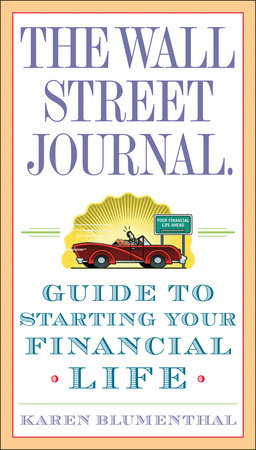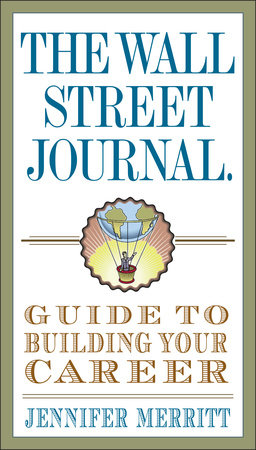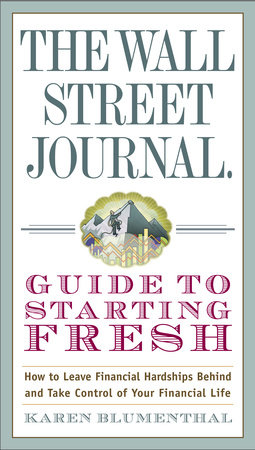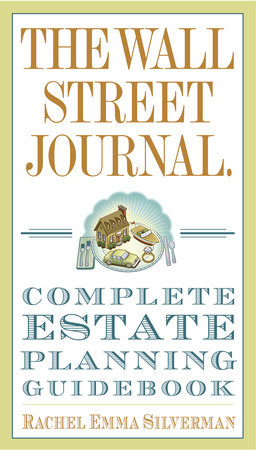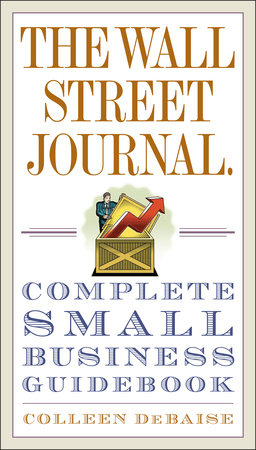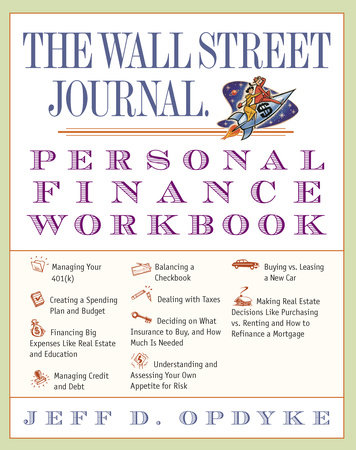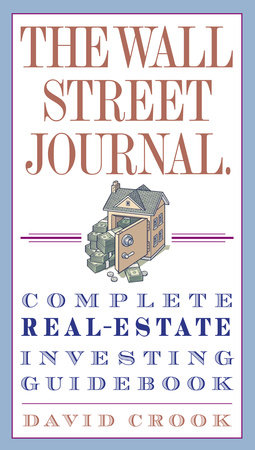Excerpt
The Wall Street Journal. Guide to Starting Your Financial Life
Where Do You Want to Go?
For any journey, your goals are the starting point.
map it
Where are you headed? It’s a simple enough question when you’re going on a road trip with a clear destination. But it can seem daunting when you’re talking about those bigger milestones, such as those along your career path or on the way to financial security.
Here’s the good news: When it comes to your money, there are many “right” answers. And you don’t need to know exactly where you’re headed. It does help, though, to know generally where you’re trying to go. Do you want only enough money to buy the newest iPod? Or are you eager to buy a car? Do you need to pay for your further education? Would you like to own a house someday?
Down the road, what are your ultimate dreams? How important is it for you to feel financially comfortable? Do you have a burning desire to be rich—whatever that means to you?
What are your goals and financial aspirations? Spend a
little time thinking them through, or write them down if that works for you. If you have a spouse or partner, talk about or write down your mutual goals as well. Once you’ve identified them, it will be easier to see what you need to do to get there.
directions
To reach your money goals, you’ll need to do some advance planning. Unless you were blessed with a trust fund or won the Survivor jackpot, the first step toward a successful financial life will be building your savings. That means, of course, that you will have to save—and you’ll have to keep from dipping into your savings to pay your bills. The more you save now, the more options and the more flexibility you will have later.
As you reach for more costly goals, you’ll need to make other decisions about your comfort levels. Borrowing can help you buy big- ticket items, from a new couch or TV to a college education, a car, or a home. But each dollar you borrow is a dollar-plus that you’ll have to pay back, factoring in interest payments. How much do you want to owe to someone else? How much of your earnings are you willing to give up in interest payments to others for the right to use their money? And how long do you want to be in debt?
As you reach for bigger goals, you’ll also need to assess how comfortable you are with risk. Greater risks can mean greater rewards— and steeper losses. Playing poker may be fun when you’re winning, but how do you handle your losses? As you make each new financial commitment or borrow additional money, consider how many other commitments you have or how much you already owe. How will you feel about those responsibilities if you lose your job or fall ill? What kind of financial cushion do you need to sleep well at night?
If you choose to put money into a savings account, your balance won’t shrink, but it won’t grow very fast, either. By contrast, investments in the stock market are far riskier: They can rocket up as well as slide down almost as quickly. Over time, stock-market savings should grow faster than other savings. But on any given day, or in any given month, you may actually lose money. How comfortable will you be with that? Understanding risk and your stomach for it is an important part of your planning.
the direct route
The easiest way to save is to make saving automatic and regular. Whenever you have income, whether it’s a paycheck, birthday money, or contest winnings, automatically set aside some of it. A few dollars is a good start; putting away 10 percent would be much better.
If you don’t yet have a checking or savings account, see page XXX on how to open one, then start making regular transfers to a savings account. If you don’t have enough money to open an account, at the least, stash your “savings” cash in a secure place away from your wallet. If saving becomes a habit, you won’t miss the money and your savings will grow much faster.
Experts often recommend that you have, at a minimum, savings of three to six months of living expenses at the ready. If that seems unfeasibly high to you, then you should at least try to set aside enough to cover emergencies. Ask yourself, If
I couldn’t work for three months, how much would I have to pay for rent, food, and basic needs? How much money would I need to cover a big car repair or pay for a hospital emergency room visit? That’s your minimum cash cushion.
figuring your minimum cash cushion
Write down how much you spend on these basics each month. Then multiply the total by three, six, or twelve to determine how much you need in reserve to get by for three or six months or a year. (For more insight, see “Budgeting,” page XXX.)
Housing:
Rent/mortgage and property taxes__________
Utilities (water, electric, gas, heating fuel)__________
Condo fees/property taxes__________
Food, transportation and other basics:
Groceries__________
Telephone__________
Medicine/prescriptions__________
Drugstore basics (toothpaste, soap)__________
Car payment__________
Car maintenance__________
Gasoline__________
Insurance:
Renter’s/home insurance__________
Car insurance__________
Health insurance__________
Other (disability, life)__________
Debt:
Student loan payments__________
Credit card payments__________
Other necessities:
______________________________
______________________________
additional directions
The CNN Money Web site has a “prioritizer” to help you resolve the inevitable conflicts between your various goals and your means, as well as good advice in its “Money 101” section. Go to http:// money.cnn.com/magazines/moneymag/money101/
lesson1/.
Cash
Greenbacks, moolah, bread, dough, bills, or bucks—
cash is accepted everywhere.
map it
Cash is King. Almost everywhere you go, for almost everything you want to buy, you can pay cash for it.
But, duh, you already know that, right? Well, there’s more.
As basic as it is, cash has a few challenges of its own. It’s bulky to carry around, and if you lose it or it’s stolen, it’s gone. By contrast, the amount you lose from a stolen debit or credit card is limited if you report the theft right away.
If you don’t have a bank account, it can be tricky to turn someone else’s check into your cash.
In certain situations, you may prefer to stick with plastic and skip the green stuff. But even in an electronic world, it’s crucial to have cash on hand, just in case. A natural disaster, a prolonged power outage, or even a terrorist attack could leave you unable to buy food or other basics with your debit or credit card or a check.
directions
If you don’t have enough cash going in and out of your life to justify a checking or savings account, you may still occasionally receive checks from friends or for work you do for others. The easiest way to cash a personal or payroll check when you don’t have an account of your own is to go to the bank listed on the check. (Most banks will cash checks written from their accounts.) Once at the bank, you’ll need to endorse the check by signing your name in the marked space on the back exactly as it is written on the check. (Why do this at the bank? Because once a check is endorsed, anyone can cash or deposit it.)
Check-cashing stores and other outlets will cash government or payroll checks for a fee that can run from a few dollars to 5 percent of the check amount, or $25 for a $500 check. Some stores may also make you purchase a “membership” first. Wal-Mart stores will cash government and payroll checks for $3 per check, regardless of the amount.
Of course, avoiding these fees means you will keep more of your money. So, if you need to turn a check into cash only occasionally, consider asking friends or relatives with bank accounts to help you out by cashing your check at their bank after you sign the check on the back and write underneath your signature that it is payable to your friend.
If you need to pay someone else with a check, you will need to buy a money order. These are widely available at the U.S. Post Office, convenience stores like 7-Eleven, grocery stores, and some discount stores. Usually you’ll pay a fee of 45¢ to $1 per money order. The money order will look much like a check with the amount printed on it. You will fill out the name of the payee—that is, the recipient— and get a receipt, which will allow you to track the money order if it is lost or stolen.
the direct route
Even if you have a checking account and a debit or credit card, keep at least $20 in cash with you all the time. With that basic amount, you’ll have at least some options if you find yourself stranded with a dead cell phone. A couple of quarters can come in handy, too, just in case you ever have to use a payphone.
At home, keep at least $20—more if you’re responsible for several people—in a secure place for emergencies.
When you have more than $200 or $300 in cash in your wallet and around the house, it’s time to consider a savings or checking account. You’ll not only have the money in a safer place, but you can also earn interest on it, which is the return that banks and others will pay you for the right to have access to your money. It’s an odd concept, but having too much cash lying around can cost you because you are missing out on the chance to earn interest.
wrong turns
Some banks and stores offer cards that act a little bit like a checking account but look like a credit card. Your money is loaded on these so-called prepaid cards with Visa or MasterCard logos, allowing you to pay for purchases or get cash back at stores. Generally, these prepaid cards are very expensive: You may pay $10 or more to buy one, $5 or more per month to maintain it, and an additional amount every time you add more money to it. A free checking account with a debit card is a much cheaper option. (See “Checking Accounts” on page XXX.)
Resist the temptation to get cash from your upcoming paycheck with a “payday loan,” a short-term loan that must be repaid when you get paid. You’ll likely pay fees to the check-cashing or payday loan store of $15 to $30 for each $100 borrowed, or up to $150 on a $500 paycheck, which could repeatedly leave you short of money. If you are careful with your spending and save regularly, you will never be that desperate for cash.
Savings Accounts
The basic bank account for saving money.
map it
Savings accounts are often the first step in a financial journey. They usually pay a higher interest rate than checking accounts, but are less flexible. Generally, you can’t write checks on savings accounts, and you may be restricted to three withdrawals a month.
Putting money regularly into a savings account can be the best way to start and sustain a savings habit. To make it easier, most banks will let you set up automatic transfers from a checking account to a savings account.
Still, interest rates on accounts can vary widely, as do fees, and low interest rates on top of fees can be the killer combination that keeps your account from growing.
directions
Savings accounts used to be so easy: You made a deposit and the bank paid you a decent rate of interest, often enough to cover the annual rate of inflation, those creeping price increases that eat away at the value of our cash.
No more.
In recent years, savings accounts have morphed into a surprising array of complicated choices, with wildly different interest rates and hidden fees and costs.
Take the most basic account. If you opened one as a kid, the bank probably waived any fees or minimum amounts to encourage you to start saving at a tender age. Once you turn eighteen, however, many banks begin charging $3 or $4 a month for accounts with less than $300 or $500. At the same time, the interest rate paid on many bank savings accounts has slid well below 1 percent—to as low as .10 percent a year, or a miserly 10¢ a year for every $100 saved. That’s way below the annual inflation rate of roughly 4 percent.
That means you might receive just 30¢ to $2 per year in interest on a $300 account. And if your account balance falls below $300, you could pay more than your annual interest in one monthly fee!
Still, basic savings accounts make sense if you have only a few hundred dollars in savings or if you want a backup in case you run out of money in your checking account. To avoid being ripped off by fees, keep your account balance above the minimum your bank requires.
Nearly all banks also offer money-market saving accounts. These accounts pay higher interest rates than regular savings accounts and may come with check-writing privileges, but they also may limit your withdrawals. Most money-market accounts require a minimum balance of $1,000 to $10,000. They can be convenient, since they are likely to be at the same place as your checking account. But you can probably get a higher interest rate in a money-market mutual fund or a certificate of deposit. (For more on these ways to earn interest, see “Better Cash Management” on page XXX.)
The newest wrinkle in savings option is the online account. First offered by online banks like ING Direct, EmigrantDirect, and HSBC Direct, these accounts often have no minimum required balance and pay far higher annual interest rates, more than 3 percent in spring 2008. These accounts have the fewest fees and potholes, save one: You’ll never deal with anyone face-to-face. You will do all your banking— deposits, transfers, and withdrawals—electronically, by mail, or on the phone.
These accounts may be the best deal for small and large savers who are comfortable doing all their banking online. If you have a checking account, you can link the two so you can transfer money back and forth. But if you don’t have another account, you will have to send deposits and get your withdrawals by the old-fashioned mail.
As online accounts have grown more popular, large U.S. banks, such as Citibank and Washington Mutual, have added their own higher-paying online savings accounts for customers who also have checking accounts with them.


